
Lets reduce your sugar carving with sugar free chocolates. Giftblooms offers wide varieties of sugar free chocolate delivery for diabetes patients, health conscious those are chocolate lovers but cannot eat chocolates.
Food

Lets reduce your sugar carving with sugar free chocolates. Giftblooms offers wide varieties of sugar free chocolate delivery for diabetes patients, health conscious those are chocolate lovers but cannot eat chocolates.
Layer cakes are generally as heavenly as they are embellishing and the ideal treat for any event. There are two different layers of cake filling with varieties of flavors or butter cream frosting (sandwiched) between layers. It is also known as “Sandwich cake”. Layer cakes put an outcry point on your table for occasions and extraordinary events and two fold as a staggering centerpiece. Layer cakes incline less vigorously on butter and sugar sparing you and your family calories and fat without relinquishing taste. From lemon to coconut to German chocolate, there’s nothing entirely like a soft, towering layer cake. It just requires somewhat additional push to develop a solitary tiered cake, and the outcome feels a great deal merrier. These cakes are referred by diameter.
The testing a portion of making this very Southern treat is slicing the four cakes down the middle equitably.
For a definitive indulgent pastry attempt this powerful layer cake! The best thing about this cake, other than it being so natural, is that you can make it to satisfy your taste buds! You truly can pick any fixings that you might want. The recipe is basic and the outcomes are astonishing. With the help of internet you can find various types of online cakes recipe and take help from that. To understand better you can even order a layer cake through online cake delivery services and find the details just having only a bite.
An amazing fish stew recipe. One of the traditional dishes of the of my country that the popularity it has not believe how it can be so simple to prepare.
Fish Stew
Ingredients:
4 pieces of fish (of your choice)
1 teaspoon of paprika
Juice of 1 lemon
2 dl of white wine
Salt and pepper to taste
1 onion
3 cloves of garlic
4 ripe tomatoes
0.5 dl of olive oil
1 bay leaf
1 bunch of parsley
Preparation
Arrange the slices of fish and season it with paprika, lemon juice, white wine, salt, and pepper. Let it marinate for 20 minutes.
Peel and wash the onions and the garlic cloves, cut the onion into thin slices and chop the garlic. Wash tomatoes and cut them into thin slices. Throw in a saucepan, the onion, garlic, tomatoes, bay leaf and parsley. then arrange the slices of fish drained over.
Drizzle with marinade sauce and olive oil, cover and cook over low heat for about 35 minutes, adding a little water if necessary. Taste the salt, and remove from heat and serve sprinkled with chopped parsley.
http://www.feminityandglamorous.com/
Freshly made juices have undeniable healing properties, so a lot of people lately taken with juice fasts to heal your body is detoxifying or just tone, refresh and rejuvenate. It is recommended to drink juice prepared far from ripe fruits and vegetables. Within 5 – 15 minutes fresh juices lose substantial majority of useful properties – juice oxidises quickly and under the influence of air, sun and heat decompose and much of vitamins, minerals and enzymes are lost almost completely. Moreover, it is better to drink juice of ripe fruits and vegetables at the right season for them.
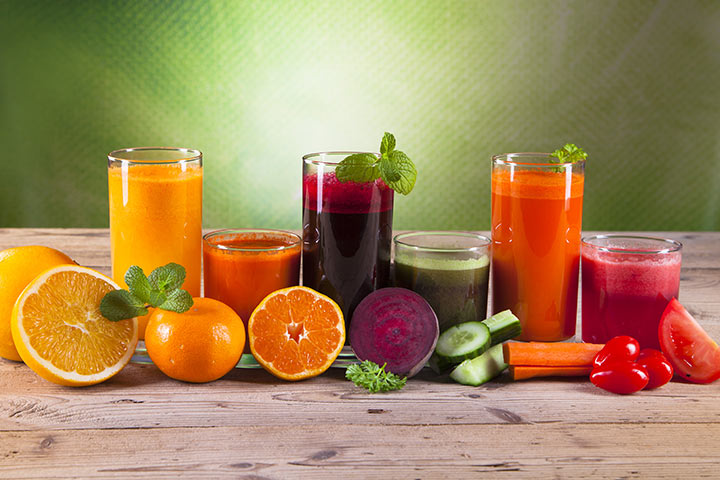
Fruit juices have merit in purifying our body while vegetable mainly serve as food to tissues and organs. But this is roughly – both juice clears the body of toxins, mucus, useless substances that have accumulated for years in our organs and tissues.
For example, beet juice literally wash the liver and clears it “to shine” because of its high content of organic active chlorine. Celery juice melts harmful calcium formations and calcium salts. And many other examples. We can do as monosokove (from one type of fruit or vegetable) and a combination of several types. The basis is most often used apples and carrots. This is done in order juices are pleasant to taste and diluted strong purifying properties of certain types of vegetables or Greenleaf.
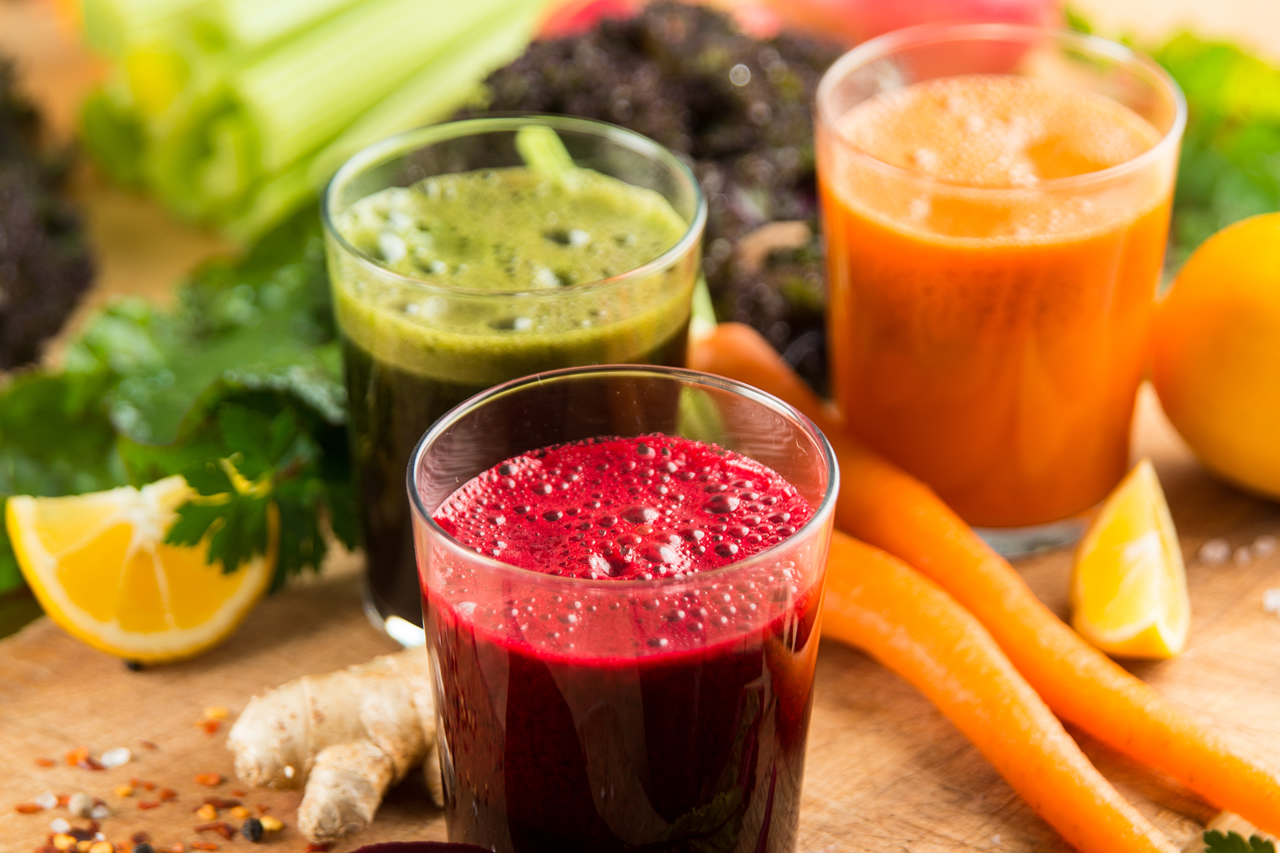
For example parsley is quite pronounced action, because of its high content of essential oils. So it is with almost all spices, and not only them. Beets also accepted in pure form can contribute to severe medical crisis due to its powerful beneficial properties. Celery is so powerful in melting of harmful calcium deposits and joint slag that taken over in pure form, it is believed that it is able to “melt our bones.”
From there comes the rule gradually increase the proportion of highly medicinal juices in combination with carrot or apple. For example:
1st and 2nd day: apple juice and celery – 4 1
3rd and 4th day: apple juice and celery – 3: 2
5th and 6th day of apple juice and celery – 2: 3
You can continue this ratio because it tastes pretty loud and pushy, not well received by most people. But it all depends on your personal preference. These combinations literally recommended for almost all health problems. Make a juice that will be closest to your taste and depending on your health goals. It is important to drink juice with pleasure, not by force.

An infographic by the team at Online Masters In Public Health
1. India: 121 million metric tons
2. U.S: 89 million MT
3. China: 31.8 million MT
4. Russia: 31.2 million MT
5. Brazil: 30.1 million MT
Not surprisingly, a list of top domestic consumption equals exactly the list of producing countries. One other thing… the European Union, taken as a group, would actually be #1, producing and consuming 140.4 million metric tons of milk.
10,000-6,000 years ago: Neolithic farmers in Britain and Northern Europe begin milking cattle for human consumption.
1700 – 63 B.C. The Old Testament refers to a ‘land which floweth with milk and honey’ some twenty times. In all, the Bible contains some fifty references to milk and milk products.”
460-370 B.C.: Hippocrates used raw milk to heal patients from disease.
1800s: Cheap, swill milk was produced in the 1800s in order to increase profits. These milk producing cows were fed distillery waste instead of their normal diet of green pasture. 50 percent of those who drank this milk died.
1864: Pasteur develops a process now called Pasteurization
1884: the first milk bottles appear.
1899: Auguste Gaulin, a Frenchman changes the physical and chemical properties of milk. Gaulin’s inventged an emulsifying or ‘homogenizing’ machine, that broke milk’s fat globules into a smaller, more uniform size that resisted separation and rising.
1987: the FDA mandated pasteurization of all milk and milk products for human consumption
1990: The use of genetically modified milk is approved
2008: FDA approves “cloned” milk
Factoid: FDA experts measured vitamins A, C, B1, B2, B6 and B12 as well as niacin, pantothenic
acid, calcium, iron, phosphorous, zinc, fatty acids, cholesterol, fat, protein, amino acids and lactose in milk from 600 cloned animals, including cattle. Levels all looked normal.
cheese, yogurt, cream, butter, ice cream, pudding, cream cheese, Gelato, sour cream, chocolate
More nutritious than pasteurized milk
Contains enzymes (pasteurized milk doesn’t)
Contains probiotics, is rich in beneficial bacteria
Easier to digest
Factoid: 29 million Americans are lactose intolerant; 85 percent of those with lactose intolerance can tolerate raw milk.
Butterfat is a great source of easily absorbed vitamin A. It also contains the fat-soluble vitamins D, E and K2.
Raw butterfat is rich in conjugated Linoleic acid, helps fight cancer
Is not homogenized
Raw milk clabbers when left out; pasteurized milk goes sour
Helps fight asthma and allergies
Here are some other reasons why full fat dairy foods are good for you;
Butterfat is a source of trace minerals, including manganese, chromium, zinc, copper, selenium, and iodine.
Milk, cheese (and meat) from grass fed cattle is a good source of omega 3 fats.
When dairy products come from grass fed cows they contains high levels of conjugated linoleic acid (CLA) — besides fighting cancer, it is a compound that helps your body build muscle rather than store fat, amongst other things.
When you eat fat as part of your meals and snacks it helps to slow down absorption, and this means you feel fuller for longer.
Palmitoleic acid, occurs naturally in full fat dairy products and meat, and it is protective against insulin resistance and diabetes.
The argument against Raw Milk boils down to one thing:
It can harbor dangerous microorganisms that can pose serious health risks such as Salmonella, E. coli, and Listeria.
BUT just how “dangerous” is raw milk by comparison?
Produce is responsible for the greatest number of illnesses each year (2,062),
Poultry is #2: 1,112.
Dairy products are at the bottom of the list. They cause the fewest outbreaks and illnesses of all the major food categories – beef, eggs, poultry, produce and seafood.
From 1990 − 2006, there were 24,000 foodborne illnesses reported each year on average. Of those, 315 per year are from dairy products. Or about 1.3% of foodborne illnesses each year.
8: Number of states that allow raw milk to be sold in stores for human consumption — Arizona, California, Connecticut, Maine, Pennsylvania, South Carolina, New Mexico and Washington. In others, like Florida, the milk has to be marked as pet food.
4 companies dominate the milk industry: Land O Lakes, Foremost, Dean Foods (largest dairy producer), Dairy Farms of America
89 million tons: annual production of milk in America or $27 billion in sales.
65,000 – 81,000: number of U.S. dairies, yet corporate consolidation means that about half of the milk sold comes from just under 4 percent of the farms.
Factoid: Between 1950 and 2012, the number of dairy cows in the United States fell by more than half, yet during that same period, the average annual milk yield more than tripled. How can that be?
CAFOs: Most dairy cows are raised in concentrated animal feeding operations (CAFOs); about 10 percent of those are considered large CAFOs, each with more than 700 dairy cattle. At CAFOs, cows are:
artificially inseminated
Fed high protein food instead of grass
Given genetically engineered growth hormone rBGH (recombinant bovine growth hormone to increase production of milk per cow.
GM since: 1994: date when milk first was genetically modified
How widespread is GM milk: 17 percent of US cows were injected with rBGH in 2007 (most recent figure). Milk from rBGH-treated cows contains elevated levels of Insulin Growth Factor-1, a hormone linked to increased risks for certain cancers.
What to watch for: Tough luck, American milk drinkers: No label is required for milk from rBGH-treated cows.
FACTOID: Most of the industrialized nations of the world, including Canada, Australia, New Zealand, Japan and all 25 nations of the European Union, have disallowed the use of rBGH. Not the U.S.
Cows produce 90% of the world’s milk needs. Each cow provides an average of 90 glasses of milk a day, or over 200,000 glasses over the course of its lifetime. Working by hand, a farmer can milk around 6 cows an hour.
Queen Elizabeth II of England each day drinks milk from cows raised on her own Windsor estate.
It takes 10 pounds of milk to make a pound of cheese, 21 pounds of milk to make a pound of butter, and 12 pounds of milk to make a single gallon of ice cream
Despite its creamy texture, milk is comprised of 85 to 95 percent water. The rest of its volume comes from nutritious vitamins, proteins, carbohydrates, and fat.
It takes about 345 squirts to produce one gallon of milk.
Milk was delivered in glass bottles until plastic containers were invented in 1964.
Milk delivery to homes began in 1942.
Half a lemon dipped in milk will lift stains off your fingers
Make a paste of powdered milk, water, and salt, and apply to irritated bug bites.
Dry skin is prevalent in the winter, but you don’t have to suffer. Rub your skin with milk two or three times a day until your skin is healthy again.
Comparing food prices over the last 100 years (1913-2013):
Milk: 37 cents per gallon in to $3.53 a gallon
Potatoes: 2 cents to 63 cents a pound
Eggs: 37 cents to $1.93 a dozen
We drink cow’s milk here, but elsewhere…
Water buffalo: produce half of the milk consumed in India. Ghee, a kind of liquid butter, is made from water buffalo milk.
Reindeer: the only source of milk in northern Scandanavia. The fat content of reindeer milk is 22%, six times as much as cow’s milk
Factoid: It takes two people to milk a reindeer — one to do the milking and the other to hold the reindeer’s horns.
Horse: Mongolians make a dried-out concentrated paste from horse milk. In southeastern Russia, people use horse milk to make a slightly alcoholic drink called kumiss.
Sheep: Do you like French Roquefort and chevre cheeses. Made from sheep’s milk, which has twice the fat content of cow’s milk.
Camel: In the hot desert, camel can last 7 days at 86 degrees Fahrenheit
Yak: In Tibet, people make yak butter tea. It tastes like a salty, creamy soup.
Almond milk
Coconut milk
Rice milk
Soy milk
http://www.jagranjosh.com/general-knowledge/top-10-countries-by-milk-production-1318490243-1
http://www.dairyco.org.uk/market-information/supply-production/milk-production/world-milk-production/
http://www.naturalnews.com/039341_raw_milk_pasteurized_illness.html
http://www.bls.gov/opub/btn/volume-2/pdf/average-food-prices-a-snapshot-of-how-much-has-changed-over-a-century.pdf
http://dairyfreecooking.about.com/od/dairyfreebasics/tp/MilkSubstitutes.htm
http://www.havemilk.com/article.asp?id=1485#yak
http://milk.procon.org/view.resource.php?resourceID=000832
http://www.finedininglovers.com/stories/milk-facts/
http://nourishedkitchen.com/10-reasons-drink-raw-milk/
http://www.npr.org/templates/story/story.php?storyId=91843992
http://www.fda.gov/Food/ResourcesForYou/consumers/ucm079516.htm
http://www.2020site.org/fun-facts/Fun-Facts-About-Milk.html
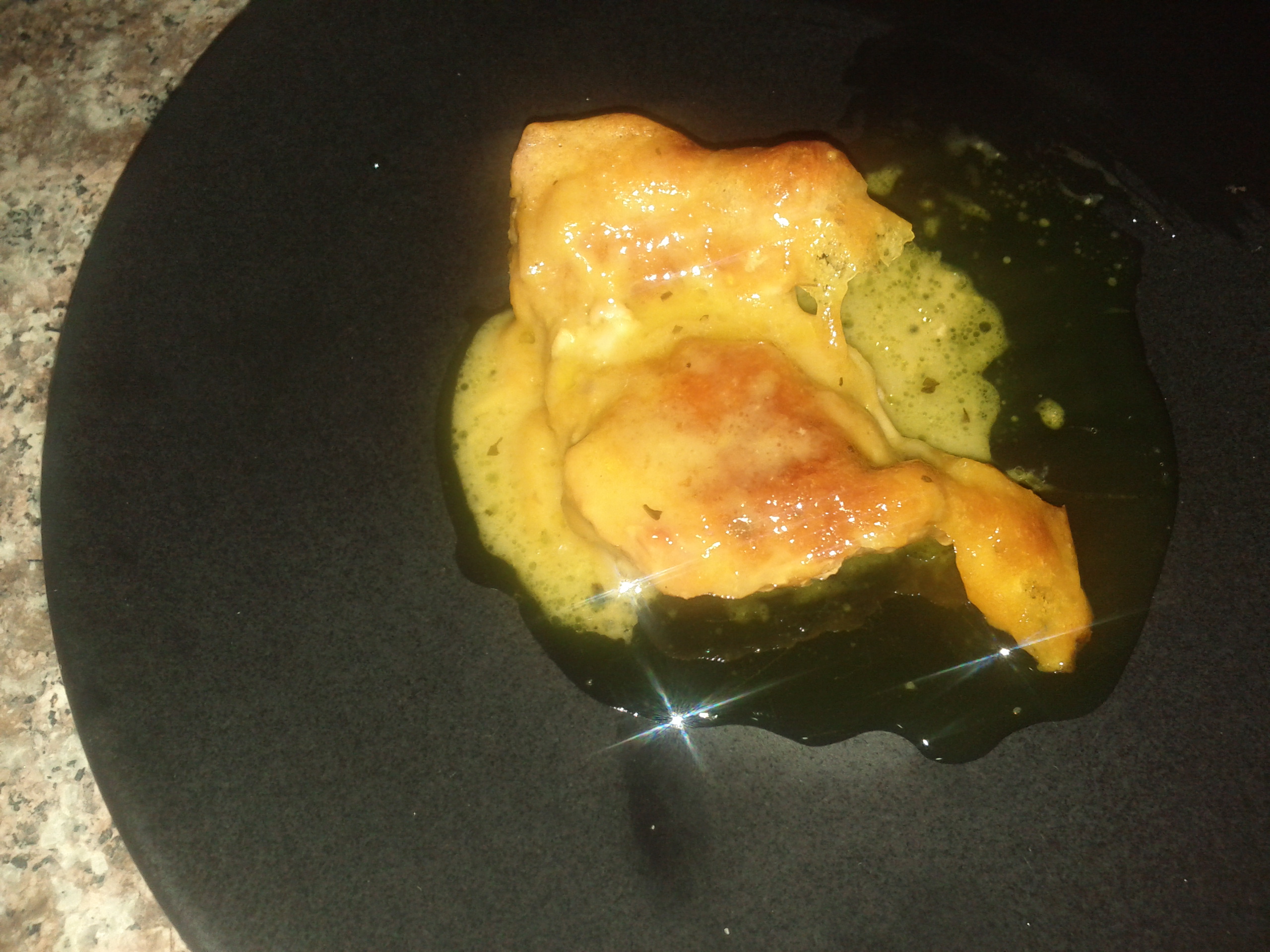 Honey Mustard, this sauce can be used with a big variety of meals. here is how to make Chicken Honey Mustard.
Honey Mustard, this sauce can be used with a big variety of meals. here is how to make Chicken Honey Mustard.
Continue reading “Chicken Honey Mustard recipe”
Tagliatelle and tagliolini (from the Italian tagliare, meaning “to cut”) is a traditional type of pasta from Emilia-Romagna and Marche, regions of Italy. Individual pieces of tagliatelle are long, flat ribbons that are similar in shape to fettuccine and are typically about 6.5 mm to 10 mm (0.25 to 0.375 inch) wide. Tagliatelle can be served with a variety of sauces, though the classic is a meat sauce or Bolognese sauce. Tagliolini is another variety of tagliatelle that is long and cylindrical in shape, not long and flat. Here is a traditional Tagliatelle pasta recipe
Continue reading “Tagliatelle Pasta Recipe”
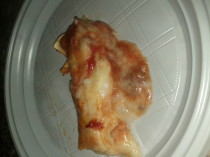 Lasagne (Lasagna) originated in Italy, is a wide, flat pasta shape and possibly one of the oldest. As with most other types of pasta, the word is a plural form, lasagne meaning more than one piece of lasagna ribbon. The word also refers to a dish made with this type of pasta in several layers interspersed with layers of various ingredients and sauces Continue reading “Authentic Lasagna Recipe”
Lasagne (Lasagna) originated in Italy, is a wide, flat pasta shape and possibly one of the oldest. As with most other types of pasta, the word is a plural form, lasagne meaning more than one piece of lasagna ribbon. The word also refers to a dish made with this type of pasta in several layers interspersed with layers of various ingredients and sauces Continue reading “Authentic Lasagna Recipe”
The pea is most commonly the small spherical seed or the seed-pod of the pod fruit Pisum sativum. Each pod contains several peas. Peapods are botanically a fruit, since they contain seeds developed from the ovary of a (pea) flower. However, peas are considered to be a vegetable in cooking.
Peas are a very good source of Vitame A, it can be eaten raw or cooked actually we spent a lot of nights gathered around eating raw Peas, or cooked like the recipe below. Continue reading “Peas and meat Recipe”
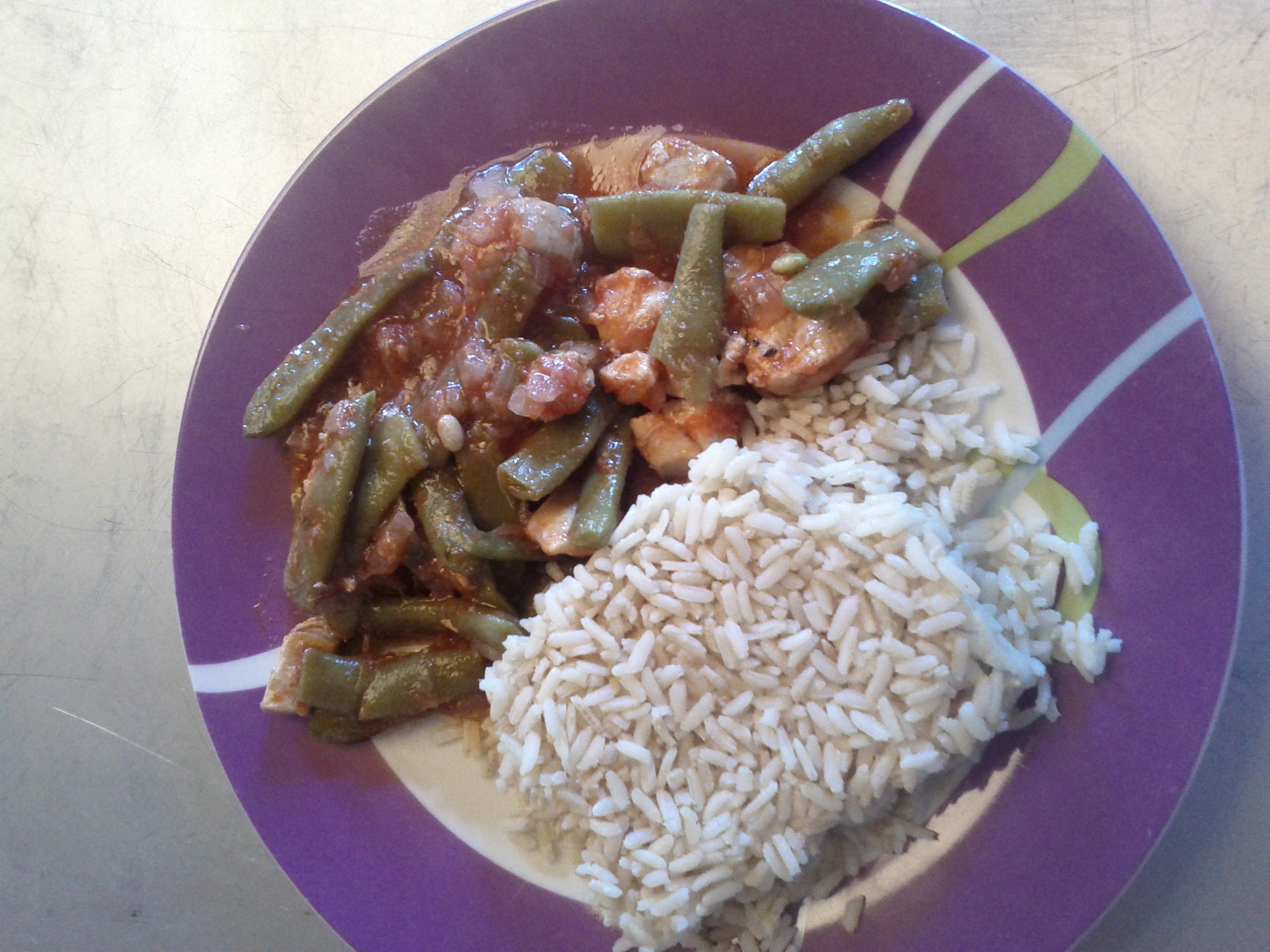 Green beans, also known as French beans, Fine beans , string beans in the northeastern and western United States, or ejotes in Mexico, are the unripe fruit of specific cultivated varieties of the common bean
Green beans, also known as French beans, Fine beans , string beans in the northeastern and western United States, or ejotes in Mexico, are the unripe fruit of specific cultivated varieties of the common bean
Green bean varieties have been bred especially for the fleshiness, flavor, or sweetness of their pods. Haricots verts, French for “green beans”, may refer to a longer, thinner type of green bean than the typical American green bean. Continue reading “Green beans and Meat Recipe”